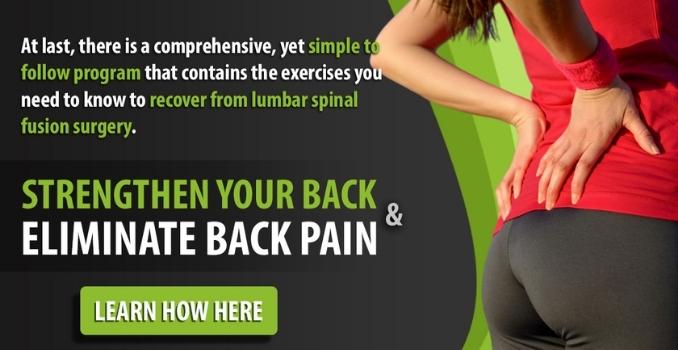
Discovering the ideal inversion table alternative that fits your needs is critical in your search for maximum spine health and pain relief. Finding an appropriate alternative allows you to focus on your well-being without sacrificing comfort or accessibility, whether due to space constraints, price considerations, or health restrictions.
This journey provides various full body workouts and strategies that can be easily combined into your daily routine to promote spine health and flexibility. Finding the best inversion table alternatives becomes a purposeful undertaking with a focus on individualized solutions, boosting your capacity to alleviate back discomfort and enhance overall physical fitness.

What Is Inversion Therapy?

Inversion therapy is a therapeutic technique that involves hanging upside down or assuming an inverted position to alleviate various health issues, particularly those related to the spine. This method utilizes devices such as inversion chairs, inversion boots, or gravity boots, providing a unique way to achieve spinal decompression and spinal traction.
Fitness enthusiasts and individuals experiencing neck pain turn to inversion therapy to counteract the effects of gravity on the spine. The inverted position achieved with inversion chairs or hanging upside down with inversion boots helps to stretch and decompress the spine, easing pressure on the discs and nerves. This reduction in pressure can potentially alleviate discomfort associated with conditions such as herniated discs or sciatica.
Moreover, inversion therapy is believed to enhance blood flow to the brain, improving oxygenation and nutrient delivery. As users lay flat in the inverted position, the pull of gravity encourages proper alignment.
It can contribute to better posture over time. While inversion therapy may offer relief for some, individuals considering this approach should consult with a healthcare specialist to ensure its suitability for their specific conditions.
What Is An Inversion Table?

An inversion table is a device used in inversion therapy where the users recline on the table and gradually hang upside down. The fundamental idea is that inverting the body aids spinal decompression, alleviating disc pressure and mitigating back pain.
Typically, the user secures their ankles to the table and customizes the inversion angle according to their preference. This equipment provides an alternative approach to inversion therapy, distinct from using an inversion chair.
Why Look For An Inversion Table Alternative?
Many people look for different options instead of using inversion tables, and there are good reasons for that. Inversion therapy, which can help some people, might not be right for everyone. People with medical conditions such as high blood pressure, glaucoma, or heart problems may be advised not to use inversion tables.
In addition, some people might struggle with how inversion tables feel, or they may not have enough space or money. In these cases, trying other things like yoga poses, core strengthening exercises, or alternative back pain relief methods is easier and more practical.
When looking for alternatives to inversion tables, keep your health and preferences in mind. Speaking with healthcare professionals can be extremely beneficial in determining the best way to assist you with your specific health needs. Alternatives to inversion tables can help your spine stay in good health. They stretch and strengthen your back, making it more flexible and reducing disc pressure.
These exercises can fortify the muscles that support your spine, resulting in better posture and less strain on your back. These exercises help your spine maintain its natural shape, preventing stiffness and ensuring everything is aligned properly. Combining these exercises into your routine lets you keep your spine healthy, feel better, and strengthen and stretch your entire back.
Benefits Of Using An Inversion Table Alternatives

1. Accessibility
Inversion table alternatives often require minimal or no equipment, making them more accessible for individuals who may not have the space or budget for specialized inversion tables.
2. Versatility
Alternatives like yoga poses and core exercises offer a variety of movements and positions, allowing users to choose options that suit their comfort level and preferences.
3. Safety
Some individuals may have health conditions that make inversion therapy on a table risky. Alternative exercises can be tailored to individual health needs, reducing potential adverse effects.
4. No Equipment Needed
Unlike inversion tables that require a specific piece of equipment, alternative exercises can be performed without additional tools, making them convenient for home or travel workouts.
5. Focus on Core Strength
Many inversion table alternatives, such as Pilates or core-strengthening exercises, contribute to overall core strength and stability, which is beneficial for spine health.
6. Customization
Users can readily adjust the intensity and period of alternative exercises based on their fitness level and comfort. This allows a more personalized approach to back pain relief.
Inversion Table Alternative Exercises and Stretches
1. Downward-Facing Dog
Begin Inversion Table Alternative in a 4-point position. Contract your core. Lift your hips towards the sky to form an inverted V-shape. Press your heels down towards the floor to stretch your calves. Hold this position for several deep belly breaths, in through your nose and out through your mouth. Return to the starting position and repeat the movement.

2. Hamstring Wall Stretch
For this exercise, utilize the use of the wall or plyo box, for support if needed.
Lie on your back with your knees bent and feet flat on the floor in front of the wall or plyo box. Engage your core. Lift both legs and place your feet on the plyo box closed together. Place your hands beside your body or on your belly. Hold this position for several deep belly breaths, in through your nose, out through your mouth. Return to the starting position and repeat the movement

3. Child’s Pose
Begin Inversion Table Alternative in an upright kneeling position in front of the pillow with your knees wider than shoulder-width apart. Tighten your abdominal area. Shift your hips back to your feet, lower your upper body to the pillow, and extend your arms overhead, relaxing your mid-back area for a light stretch. Take several deep belly breaths, in through your nose and out through your mouth. Relax and return to an upright sitting position.

4. Baby Cobra Pose
Lie on your stomach with your feet shoulder-width apart while maintaining good alignment with your head, shoulders, hips, and legs. Straighten your legs and press both hands on the floor. Contract your abdominal muscles and slightly lift your mid-back off the floor using your hands as support. Hold this position for several deep belly breaths, in through your nose and out through your mouth.


5. Plank
Move into a four-point position, with your knees below your hips and your hands beneath your shoulders. Tighten your core. Move into a full plank position, maintaining proper alignment with your head, shoulders, hips, and toes. Hold this position for a minute or less. Take several deep belly breaths, in through your nose and out through your mouth. Relax and return to the starting position. Repeat the movement.

6. Pelvic Tilts
Lie on your back with your knees bent and feet flat on the floor. Slowly roll your pelvis backward as if you were flattening out your spine. Hold this position for several deep belly breaths, in through your nose and out through your mouth. Slowly return to the starting position.

7. Cat-Cow Stretch
Begin Inversion Table Alternative in a 4-point position with your hands beneath your shoulders and your knees under your hips. Inhale and contract your abdominal area. Exhale and slowly round out your mid-back as you drop your head downward. Then alternate by inhaling as you slowly lift your head and arch your mid-back. Repeat the movement, alternating directions.


8. Seated Forward Bend
For this exercise, utilize the use of a chair, for support if needed.
Begin in an upright sitting position on the edge of the chair, with your legs extended and hip-width apart, maintaining good alignment with your upper body. Place both hands on each side of the chair for support. Engage your core. Hinge at your hips while keeping your back straight. Hold this position for several deep belly breaths, in through your nose and out through your mouth.


Does Inversion Therapy Really Work?
Inversion therapy uses hanging upside-down positioning to help relieve back pain and improve overall health. While some individuals report positive effects, scientific evidence supporting its efficacy is limited and inconclusive.
The theory behind inversion therapy suggests that inverting the body helps reduce spinal compression, increasing the space between vertebrae and relieving pressure on nerves.
However, research on its effectiveness remains mixed. Some studies indicate short-term benefits for certain types of back pain, such as herniated discs, while others show no significant improvement.
Additionally, inversion therapy may not fit everyone, especially those with certain medical conditions like glaucoma, high blood pressure, or heart disease.
Although anecdotal evidence suggests that some people experience relief, it is crucial to approach inversion therapy with caution.
Consult with a healthcare professional before doing it. Individual responses may vary, and more robust scientific researches are needed to prove its efficacy and safety.
Do Inversion Table Alternative Help With Spine Alignment?
Some believe inversion tables to aid in spine alignment. The concept behind using inversion tables for this purpose is that by inverting the body, the force of gravity helps to elongate the spine and create spaces between the vertebrae. This stretching effect contributes to spinal decompression, potentially relieving disc and nerve pressure.
Proponents of inversion therapy argue that the gravitational pull experienced while lying inverted on the table may encourage proper spine alignment over time. The idea is that, as the spine is gently stretched and the intervertebral spaces are increased, any misalignments or compressions may be reduced.
However, it's essential to note that scientific evidence supporting the efficacy of inversion tables for long-term spine alignment is limited. While some individuals may experience temporary relief from back pain or improved posture, the effectiveness of inversion tables can vary from person to person.
Equipment For Inversion Table Alternative Exercises

In inversion table alternatives, minimal to no specialized equipment is often required.
Here are some exercises and their associated equipment:
Choosing The Best Option For Your Wellness

Finding the best inversion table alternative is critical for personalizing spine care. It ensures accessibility by catering to various health conditions and preferences. For example, yoga poses and core-strengthening techniques provide a versatile, equipment-free approach. This enables users to address back discomfort, promoting safety and comfort effectively.
Individuals can improve spine and hip health, improve flexibility, and strengthen core muscles by prioritizing the right alternative without the constraints or potential risks associated with traditional inversion tables. Selecting an appropriate alternative promotes a personalized and long-term path to overall well-being.
Final Thoughts
You have learned that inversion tables are not the only option for improving spinal health and relieving pain. Many other inversion table alternatives can suit your preferences, budget, and lifestyle.
By incorporating some of the exercises and tips we shared, you can achieve the same benefits of inversion therapy without the hassle or risk of using an inversion table.
Whether you use a yoga mat, a stability ball, a foam roller, or a massage chair, you can enjoy a healthier and happier spine. We hope this guide has helped you find the best inversion table alternative.
Frequently Asked Questions
What Can I Use Instead Of An Inversion Table?
You can try simple exercises and yoga poses if you don't have an inversion table. Yoga poses like Downward Dog, Bridge Pose, and Legs Up the Wall can help your spine. Plank and Cobra Pose are good exercises, too.
These movements stretch and strengthen your back, making it feel better. Even without an inversion table, you can still do things to make your spine healthier.
Just be careful and start slowly, especially if you haven't done these exercises before. If you have health concerns, it's a good idea to talk to someone like a doctor or fitness expert first.
What Is Better Than An Inversion Table Alternative?
Determining what's "better" depends on individual preferences and health needs. Alternatives to inversion tables include yoga, which offers various poses promoting spinal health, or using gravity boots for hanging upside down.
Some people prefer traction devices or inversion chairs. Ultimately, what's "better" varies from person to person. It's essential to prioritize safety and select an option that aligns with your comfort level and specific health requirements.
Do Chiropractors Recommend Inversion Tables?
Opinions among chiropractors regarding inversion tables vary. Some chiropractors may recommend inversion tables as part of a holistic approach to managing certain spine-related issues, believing that the traction provided can help decompress the spine.
However, others may express caution, especially for individuals with certain health conditions like high blood pressure or glaucoma, where inversion therapy might not be suitable.
What Can I Use To Hang Upside Down?
You can use alternatives to inversion tables to hang upside down, such as gravity boots or inversion chairs. Gravity boots typically attach to a sturdy horizontal bar, allowing you to secure your ankles and hang freely.
Inversion chairs provide a seated option for inversion, offering a comfortable and controlled way to tilt your body upside down. Before attempting inversion, it's essential to ensure the equipment is securely set up and, if you have health concerns, talk to a doctor to determine the suitability of these devices for your specific needs.
Who Should Not Use An Inversion Table?
Certain individuals should avoid using an inversion table due to potential health risks. This includes people with certain medical conditions such as high blood pressure, glaucoma, hernia, cardiovascular disease, or retinal detachment. Pregnant women, individuals with spinal injuries, or those with recent surgeries are generally advised against using inversion tables.
It's important to seek recommendations from a healthcare professional before using inversion tables, especially if you have pre-existing health conditions or concerns. They can tailor recommendations to your health background, ensuring your safety and well-being during inversion therapy.
The Lumbar Spinal Fusion Recovery Program is filled with the expert tips and exercises that will allow you to eliminate discomfort and pain as fast as possible. Get the Lumbar Spinal Fusion Recovery Program & Feel Better Fast!








